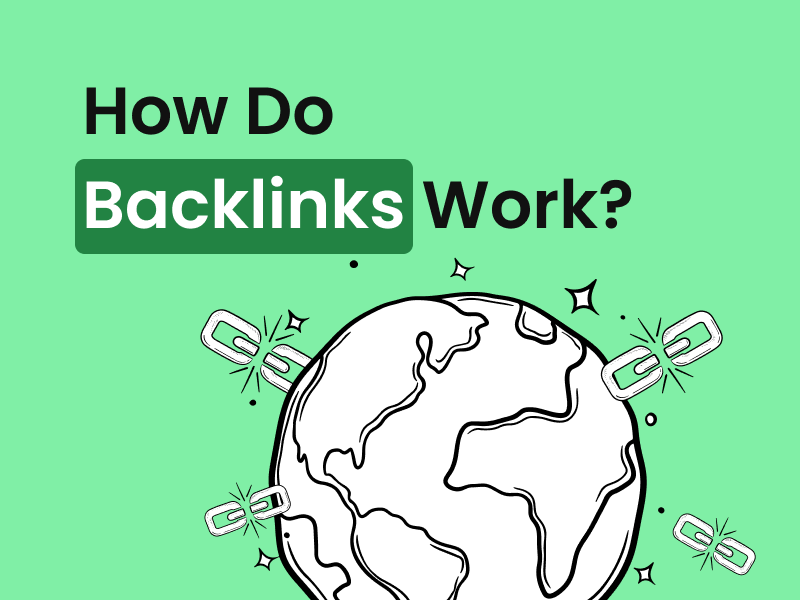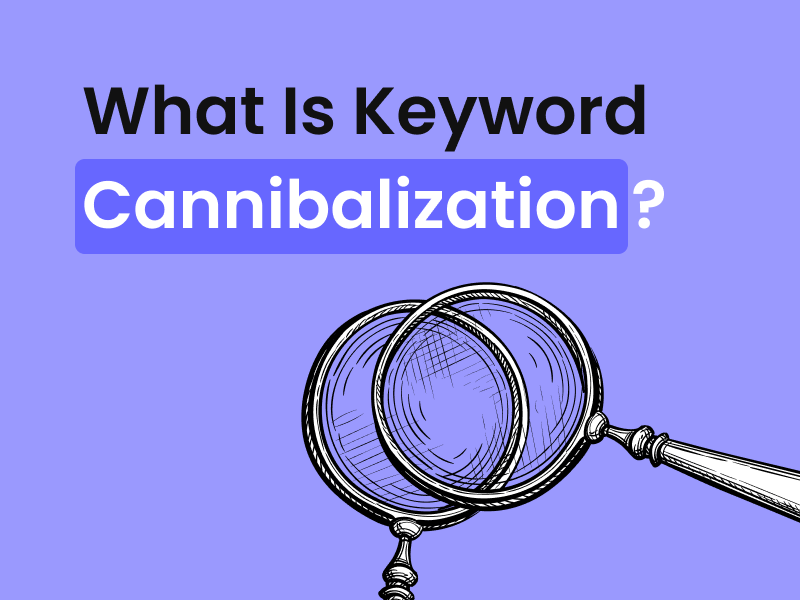14 SEO Examples to Follow in 2024: How to Create an SEO Strategy

By Melissa Ng | Last Updated 13 December 2023
Introduction to SEO
What is an SEO?
Search Engine Optimisation, or SEO, is a technique employed to optimise your website to be clearly understood and favoured by search engines. This involves arranging elements of your website, like content and structure, in a particular way to help it rank as one of the top results on search engine result pages. Essentially, SEO is both an art and science, requiring creative flair to generate engaging content while leaning on analytical insight to appeal to your desired audience. The critical aspect to understand is that SEO focuses specifically on organic ranking. This means you can’t simply pay to gain a higher ranking, it’s earned through fulfilling certain requirements set by search engines.

Importance of SEO in Digital Marketing
SEO plays a pivotal role in the digital marketing landscape. It acts as a catalyst for driving organic traffic, which accounts for 53% of all website traffic [1]. SEO is seen as a trustworthy long-term strategy for building brand visibility and reliability. Contrary to other marketing channels, such as paid advertisements, the efforts invested in SEO continue to pay off even after campaigns have ended.
Moreover, search engines have become the starting point for most online journeys. Whether people want to research, make a purchase, or find a specific piece of information, their journey typically begins with a search. Therefore, ensuring your website is visible in these searches is crucial. Furthermore, amid an era of fragmented searches across platforms – like Google, Amazon, Pinterest, YouTube and TikTok – leveraging SEO cleverly across these channels can create a sustainable influx of traffic to your website. As such, we can conclude that a well-crafted SEO campaign can considerably boost your digital marketing outcomes.
For all these reasons, the global SEO industry is projected to hit a whopping $122.11 billion by 2028 [2], underscoring its importance in modern marketing strategies.
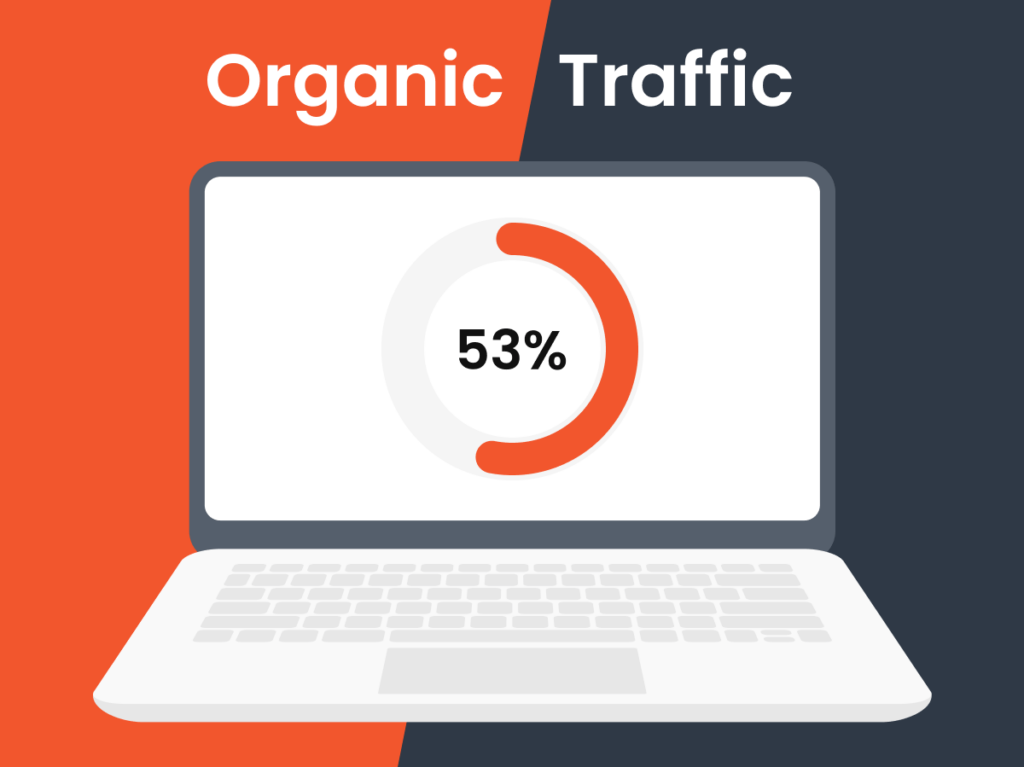
Understanding SEO Strategy
Why it’s important to create an SEO Strategy
Developing and implementing an SEO strategy is crucial for several reasons:
- Greater Visibility: SEO is the most reliable method of increasing your website’s visibility on search engine result pages (SERPs). A well-designed SEO strategy can help your website appear in relevant searches, thereby connecting you with those who are looking for what you have to offer.
- Higher Traffic: Greater visibility often translates to an increase in website traffic. Multiple studies suggest that the majority of search engine users (75%, in fact) don’t go past the first page of search results [3]. Therefore, being on the first page regarding a relevant search term means more eyes on your products or services.
- Improved User Experience: SEO involves enhancing your website’s design, speed, and content which can make it more user-friendly. An excellent user experience often leads to higher session durations and lower bounce rates.
- Establish Authority: SEO gives your brand a chance to show off what it knows and stands for. By providing valuable content that’s relevant to your audience, you can establish your brand as an authority in your field.
- Long-Term Sustainability: Unlike paid advertisements that stop generating traffic once you stop paying, SEO can offer you a more sustainable approach for gaining online traction. The benefits of SEO often endure for a long time, continuing to generate traffic and leads even after the strategy is implemented.
- Affordability: Unlike paid search campaigns that require a significant investment, the cost of implementing an SEO strategy is relatively low. This makes SEO a cost-effective technique for boosting online visibility and reach.

Key components of an SEO strategy
An SEO strategy is built on several key pillars that work synchronously to enhance your website’s ranking on search engine result pages. Here are some of the essential components of an SEO strategy:
- Keyword Strategy: This involves identifying the words and phrases your potential customers use during their online searches. Understanding these keywords can help shape your content and marketing strategies.
- Technical SEO: This aspect concerns itself with the backend of your website. Here, the focus is on improving site speed, mobile-friendliness, site architecture, and more.
- On-Page SEO: This relates to optimising individual pages of your website. It includes aspects such as the layout of your content, usage of keywords, meta tags, and headers.
- Content Marketing: Regularly creating and sharing valuable content can attract and retain a clearly defined audience. It requires developing a content calendar, researching topics that resonate with your audience, and building robust content around those topics.
- Link Building: This involves getting quality links from other websites to your pages. These backlinks signal to search engines that your content is reliable and valuable.
- Analytics: Monitoring and measuring your SEO results can help you understand if your strategy is working. Tools like Google Analytics make it easier to track your regional and global performance.
Keep in mind, each component of an SEO strategy interacts with others to build a comprehensive and robust overall strategy. Balancing each aspect requires understanding your organisation’s objectives and aligning them with your SEO goals.
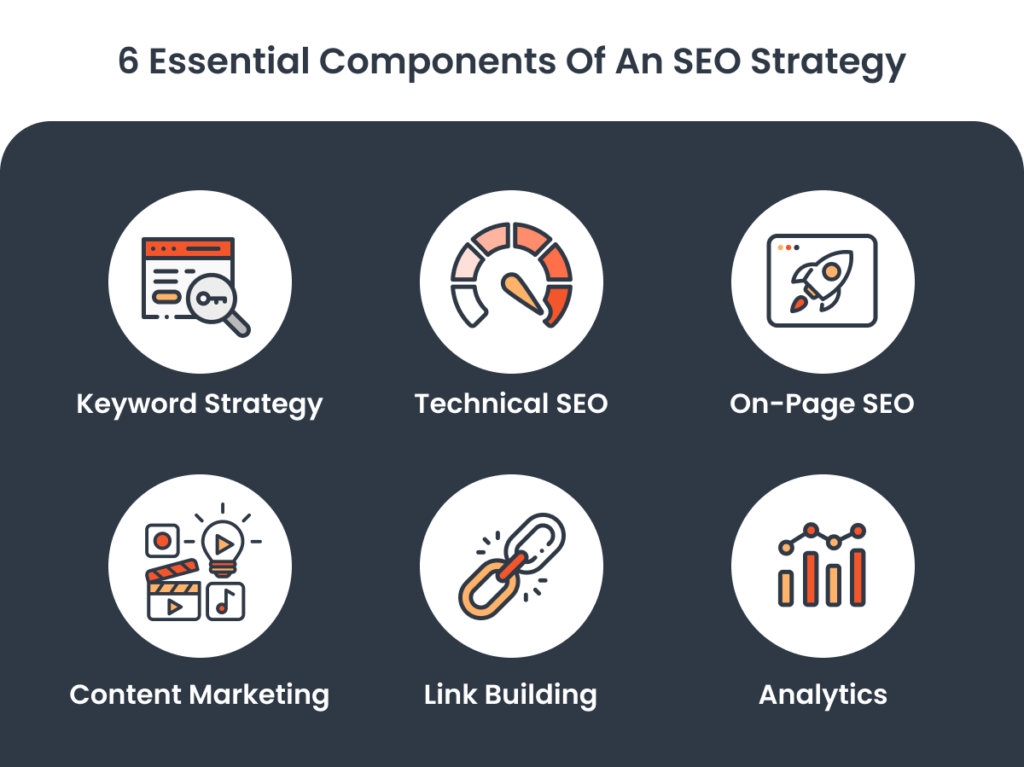
Creating Your Own SEO Template
Researching and understanding the competition
Investigating your competitors is a critical step in formulating a dynamic SEO strategy. It can offer insights into what they do well, potential opportunities, and areas where they fall short.
Here’s how to approach it:
- Identify your competition: This goes beyond well-known competitors in your niche. It can also include any website that ranks highly for keywords relevant to your business.
- Examine their website and SEO tactics: Look at their site structure, use of keywords, page loading times, meta tags and descriptions. These elements can give you a sense of their technical and on-page SEO efforts.
- Analyse their content: What kind of content are they publishing? Are they diverse (blogs, videos, podcasts, infographics), or are they mostly sticking to one format? How are they integrating SEO keywords into their content?
- Look at their backlinks: High-quality backlinks are a powerful ranking signal. Tools like Semrush or Ahrefs can help you understand where their backlinks come from.
- Study their social media engagement: Are they active on social media? What kinds of posts get the most engagement? It can help you see how they interact with their audience.
- Assess their overall performance: Use SEO tools to assess their overall site traffic, domain authority score, and ranking for relevant keywords.
Understanding the competition’s SEO strategy can give you a starting point for your own. This analysis will help identify gaps in the market and opportunities to stand out. Just remember that while benchmarks can provide insight, your strategy should always align with your specific objectives and customer needs.
Read our guide to learn more: The 10 best SEO tools and hacks.
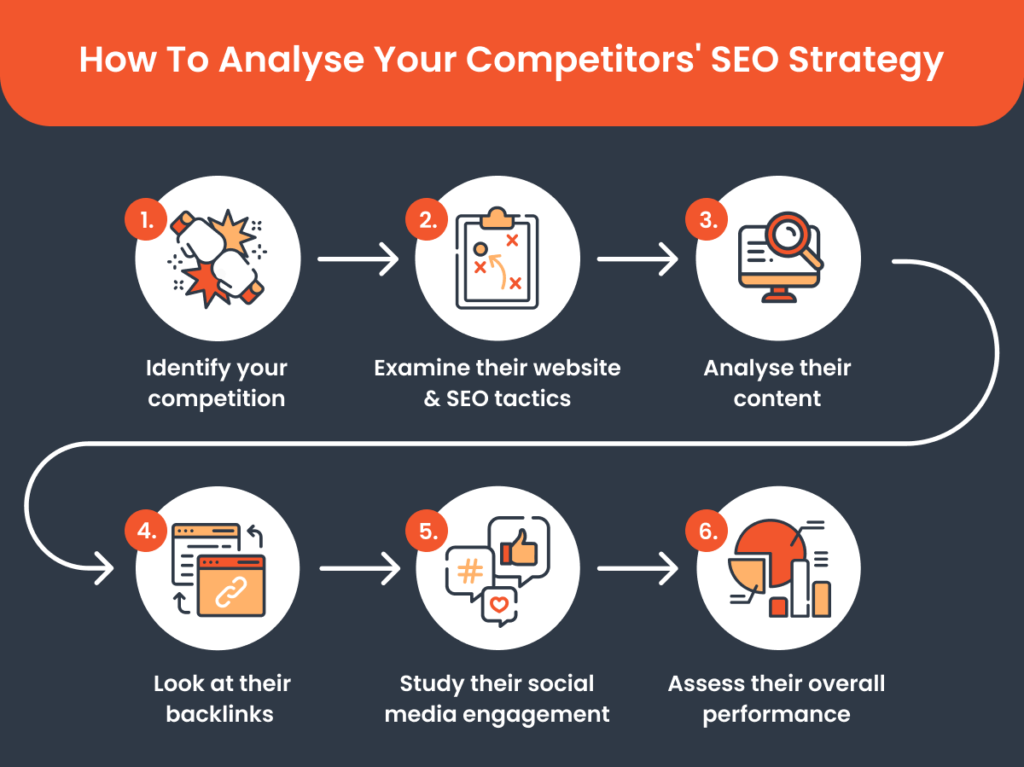
Setting up a blog
Starting a blog is a powerful strategy for improving your SEO and engaging with your audience. A blog can serve as the home for your helpful and informative content, and regularly updating it can improve your site’s ranking on search engine result pages. Here’s how you can set your blog:
- Choose Your Blog Platform: Start by choosing a platform that fits your technical skills, budget, and blogging goals. Platforms like WordPress, Blogger, and Medium are popular choices.
- Secure Your Blog Domain: Your blog domain should reflect your brand and be easy to remember. Buy a domain from trusted sources like GoDaddy or BlueHost.
- Choose a Reliable Hosting Provider: A good host can ensure your site remains up and accessible. They offer different plans depending on your needs, while built-in security measures add an extra layer of protection.
- Pick a Theme: Your blog’s appearance should align with your brand identity. Fortunately, most blogging platforms offer a variety of customisable themes.
- Essential Blog Pages: This includes pages like About, Contact, and Services. These should clearly communicate who you are and what you do.
- Install Key Plugins: Plugins enhance functionality and aid in optimisation efforts. SEO plugins, like Yoast or Rank Math, can make on-page SEO tasks easier.
- Create a Content Strategy: Blogging, at its best, is consistent. Develop a content calendar, line up topics that resonate with your audience and stick to your schedule.
- SEO Optimisation: Make sure every blog post is optimised for SEO. Use targeted keywords in your blog’s title, headings, and content to make it easier for search engines to index and rank your blog.
Just remember, starting a blog is only one part of the equation. It’s crucial to regularly update it with valuable and informative content relevant to your audience. This will help attract and retain readers, boosting your visibility and credibility over time.
Check out our blog post series for more detailed information: How To Start A Blog For Free And Make Money In 2023: A Complete Guide For New Blogger
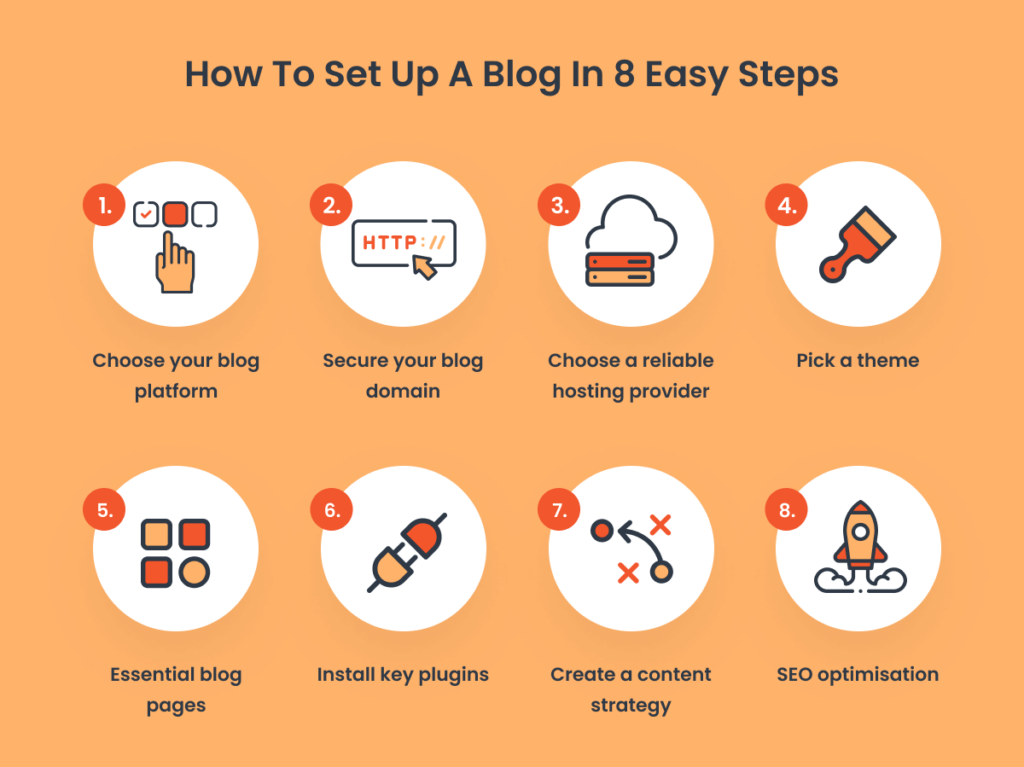
Planning your content
Creating a definitive content plan forms the cornerstone of any successful SEO strategy. It aids in focusing your efforts, ensuring you keep publishing relevant content consistently. Here are the steps involved:
- Content Ideation: Think about topics that your audience would be interested in. Consider conducting audience polls or use tools like Google Trends to understand what’s popular.
- Keyword Research: Once you have a list of topics, identify long-tail keywords relevant to these topics. There are several keyword research tools available, like Semrush, Moz, and Ahrefs, to expedite this process.
- Building Pages for Each Topic: For each topic, create a new page or blog post. Incorporate the keywords naturally into the content, headings, and meta tags.
- Consistent Blogging Schedule: Decide how often to post new content. Remember, consistency is key. Google appreciates fresh and updated content, and so do your readers.
- Link Building: Develop a plan for gaining backlinks to your website. This could involve guest blogging, influencer outreach, or social media marketing
- Meticulous Execution: Follow your plan diligently. Keep track of all activities, amendments, and progress regularly.
- Performance Measurement: Use tools like Google Analytics to measure your content’s success. Keep an eye on metrics like page views, bounce rate, and conversion rate.
Remember, each piece of content you create should provide value to the user. Prioritise quality over quantity, and ensure the content matches the user’s search intent.
Creating a monthly content plan and populating it in a spreadsheet can kick your SEO strategy into high gear. Different teams can keep track of their tasks, ensuring a smooth work process. Keep your plan flexible, making room for adjustments as you learn about what works best for your brand and what doesn’t.

14 Best SEO Examples to Follow in 2024
Long-Tail Keyword Strategy – Example 1 (Etsy)
In terms of substance in SEO, Etsy, a worldwide marketplace for selling handcrafted products, stands out. How do they do it?
How it made the best list: Etsy approaches SEO by leveraging long-tail keywords for each of its listings. Since their platform is populated with unique, handcrafted items, they have a massive amount of unique keywords. This approach aligns perfectly with their target market.
Top 5 Features:
- User-generated listings.
- Precise, detailed listing descriptions.
- Relevant tagging system.
- An algorithm that favours listings that align with shopping tendencies.
- Encourages sellers to optimise their store and product listings.
Five benefits:
- Attracts organic traffic.
- Enhances customer-seller interactions.
- Encourages repeat business by offering unique products.
- Optimal for customer retention and loyalty.
- Mirrors specificity of user searches, increasing the chances of a match.
Two cons:
- Depending on seller input, some listings might not be fully optimised.
- High number of uniquely crafted items can lead to SEO clutter.
Who it works best for: This model works best for unique, niche products vendors who are looking to reach a wider audience without big advertising budgets. By being detailed and specific with their product descriptions and tags, they attract customers who are searching for exactly that unique item.

Content Marketing Strategy – Example 2 (Nike)
Nike’s approach to SEO is a masterclass in effective content marketing. They strategically integrate trending words into their high-quality content to boost their online visibility.
How it made the best list: Nike’s content marketing strategy focuses on curating user stories, hosting live workouts, providing educational resources, and more. They use buzz-words like “new releases”, “trending”, and “must-have” throughout their site, making their brand feel dynamic and in-the-moment.
Top 5 Features:
- Website integrated with e-commerce platform
- High-quality, interest-piquing images
- Abundance of fitness and lifestyle content, featuring individuals and sponsored professional athletes
- Blog posts and descriptions containing strong SEO keywords
- Easy site navigation and well-organised product categories
Five benefits:
- Inspires customer loyalty and community-building
- Encourages repeat site visits and engagement
- Generates organic traffic through keyword optimisation
- Facilitates easy buying processes
- Acts as a platform to promote new products
Two cons:
- The vast amount of content might be overwhelming for some users
- High level of competition on popular keywords
Who it works best for: Nike’s SEO strategy suits businesses that have a range of products and a large audience base. It’s particularly useful for brands that can leverage user stories and trends to create captivating content that stimulates traffic and engagement.
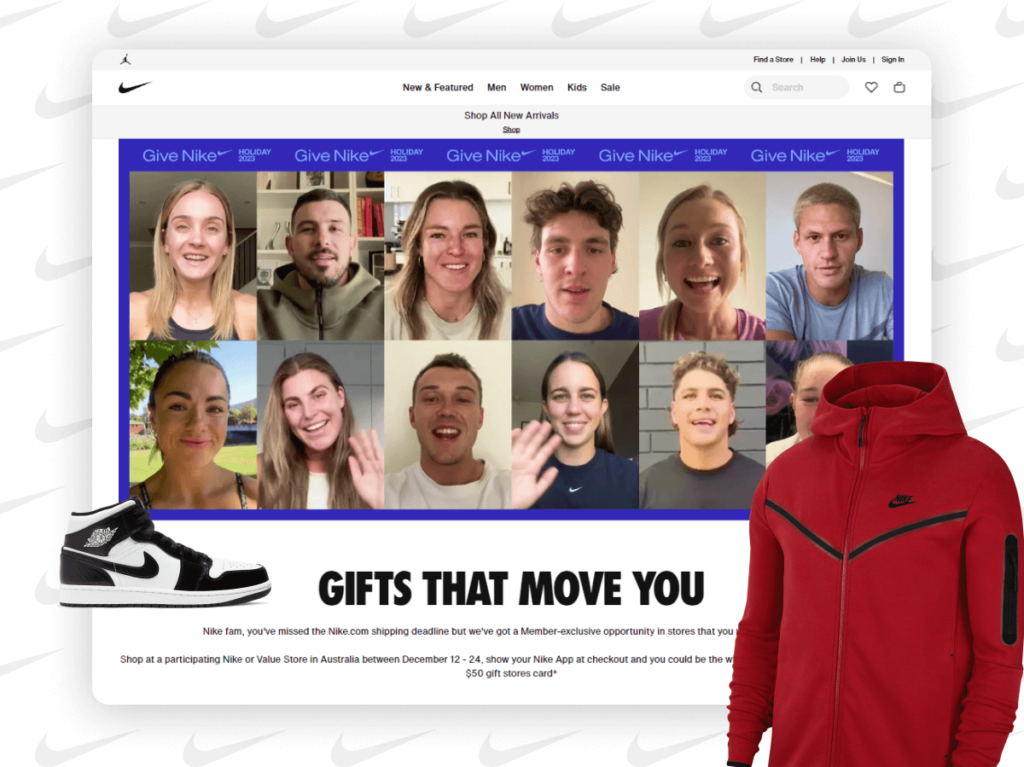
Search Intent Strategy – Example 3 (Amazon)
Renowned giant in e-commerce, Amazon, seems to have conquered the often tricky aspect of understanding and optimising for search intent in SEO.
Why it made the best list: Amazon systematically addresses the critical aspect of user intent while formulating its SEO strategy which makes it unique. Understanding that shoppers often initiate searches with “the intent to buy”, Amazon surfaces product pages that perfectly match these queries, swiftly guiding them down the purchasing funnel.
Top 5 Features of Amazon’s SEO strategy:
- Amazon’s A9 algorithm factors in product relevance, price, and customer satisfaction.
- Uses verbose, keyword-rich product descriptions.
- Encourages user-generated content like reviews and Q&As.
- Products are cleanly categorised, assisting in efficient indexing.
- Uses predictive search feature to aid user search experience.
Five benefits:
- Enhanced user navigation through predictive searches.
- Detailed product descriptions help in scoring high on relevance.
- User-generated content adds to relevancy and credibility.
- Well-categorised products facilitate ease in exploring products.
- The A9 algorithm helps in establishing a high degree of user intent match.
Two Cons:
- The website can be overly detailed, potentially overwhelming for users.
- High competition among sellers can lead to keyword saturation.
Who it works best for: Amazon’s SEO approach largely benefits marketplace-based businesses, especially those with a vast array of products. The strategy is also useful for businesses aiming to enhance their understanding of user search intent, translating it into improved content relevance and user satisfaction.
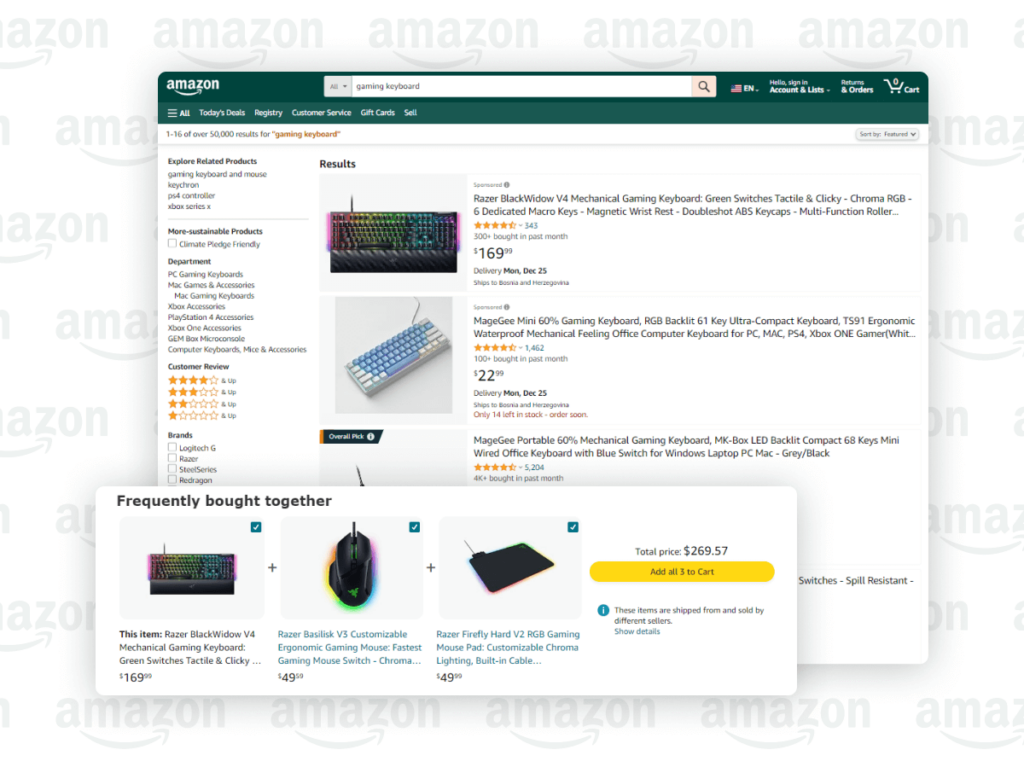
Updating Old Content for Better Ranking – Example 4 (Macy’s)
When it comes to updating older content, Macy’s, a leading omnichannel fashion retailer, presents an excellent example.
Why it made the best list: Macy’s continually updates its existing content with fresh, relevant information and keywords, keeping in line with SEO best practices. It works towards being up-to-date with the latest trends, thereby attracting more organic clicks.
Top 5 Features:
- Products are accessible through flexible navigation paths.
- Frequent addition of new products.
- Category pages are updated regularly.
- Seasonal product edits and descriptions.
- Regular blog posts highlighting latest fashion trends.
Five benefits:
- Improved search rankings through content freshness
- Increased visibility and organic reach.
- Traffic draws towards relevant products.
- Engages customers by keeping them up-to-date with trends.
- Better user experience with updated information.
Two cons:
- Requires regular maintenance, which could be resource-intensive.
- Fierce competition in fashion retail keywords.
Who it works best for: This practice works best for e-commerce businesses, particularly in the rapidly changing fashion industry. Constantly updating content to match the industry’s dynamic nature can give a significant boost to visibility and conversions.

Outreach Priority – Example 5 (Looka)
Looka offers a masterclass in SEO outreach for boosting website visibility.
Why it made the best list: Looka’s strategy was to initially make its AI-powered logo creation tool free. This created a highly linkable asset that bloggers and media outlets could share without worrying about cost complaints. The approach significantly improved their backlink profile.
Top 5 Features:
- A high-value, unique asset (the AI-powered logo creation tool).
- User-friendly tool, ensuring visitors have a positive experience.
- A clever balance of offering value up-front while keeping premium options enticing.
- Encouragement of user interactions and feedback.
- A keen awareness of Looka’s targeted audience.
Five benefits:
- Generation of quality backlinks boosts website authority.
- Increased brand visibility and reputation.
- Attracts organic traffic from multiple sources.
- Facilitates user interaction, increasing the chances of conversion.
- Allows for user feedback to improve their tool and services.
Two cons:
- The strategy might not be sustainable long-term.
- Risk of users taking advantage of free resources without converting to paid services.
Who it works best for: Looka’s SEO strategy works best for online businesses offering a unique, high-value service. Specifically, businesses that can afford to offer a valuable part of their service for free to attract backlinks and generate buzz.

Local SEO Strategy – Example 6 (Overstock, now Bed Bath & Beyond)
Overstock, now known as Bed Bath & Beyond, an ecommerce site that effectively uses local SEO, demonstrates the advantage of leveraging geographically focused SEO strategies.
Why it made the best list: Overstock is renowned for its clever use of structured data and strong emphasis on local SEO strategies. By focusing on local SEO, they manage to connect with local customers and establish a robust online presence.
Top 5 Features:
- Ecommerce site with a wide array of product categories.
- Use of structured data to provide accurate product information to search engines (including prices, ratings and availability).
- Prioritises content and features that are relevant to local customers.
- Implements schema markup to obtain rich search results.
- Optimised product descriptions and meta tags for better click-through rates.
Five benefits:
- Potential for increased visibility in local search listings.
- Boosts rankings in organic search results for location-based queries.
- Improved visibility to a highly targeted customer base.
- Enriched listing, courtesy of structured data.
- Increased site traffic and higher conversion rates.
Two cons:
- Constant update of structured data is required.
- Local SEO might be limiting for a global brand.
Who it works best for: Overstock’s local SEO strategy is most helpful for businesses with a physical location or businesses targeting specific geographical areas. The use of structured data can also serve as a recipe for success for ecommerce sites that aim to influence search engine rankings positively and offer a more comprehensive search experience to users.
Building Authority – Example 7 (Gymshark)
Gymshark, a fitness clothing brand, provides a unique example of a company that’s built remarkable authority in the fitness niche by leveraging SEO best practices.
Why it made the best list: Gymshark earns a spot among the best because of its comprehensive backlink profile and impressive social proof generated majorly through social media. They’ve combined the power of high-quality backlinks and an outstanding social media presence to rank highly in search results, thus cementing their fitness authority status.
Top 5 Features:
- Engaging, high-quality content regularly updated on their blog.
- An active and influential social media presence.
- A robust backlink profile, signifying high-quality content.
- SEO optimised product descriptions on their website.
- Active engagement with the fitness community.
Five benefits:
- Increased traffic to their website.
- Greater brand visibility among a fitness-conscious audience.
- Boosted trustworthiness through social proof.
- Higher conversion rates through SEO optimised product pages.
- Brand loyalty from actively engaging the community.
Two cons:
- Backlink profile management requires ongoing maintenance.
- Highly saturated competition in the fitness niche.
Who it works best for: This SEO approach aligns perfectly with businesses operating in a specific niche. Active community engagement, coupled with a stronghold on backlink building and optimised content, can help such businesses scale their success ladder.
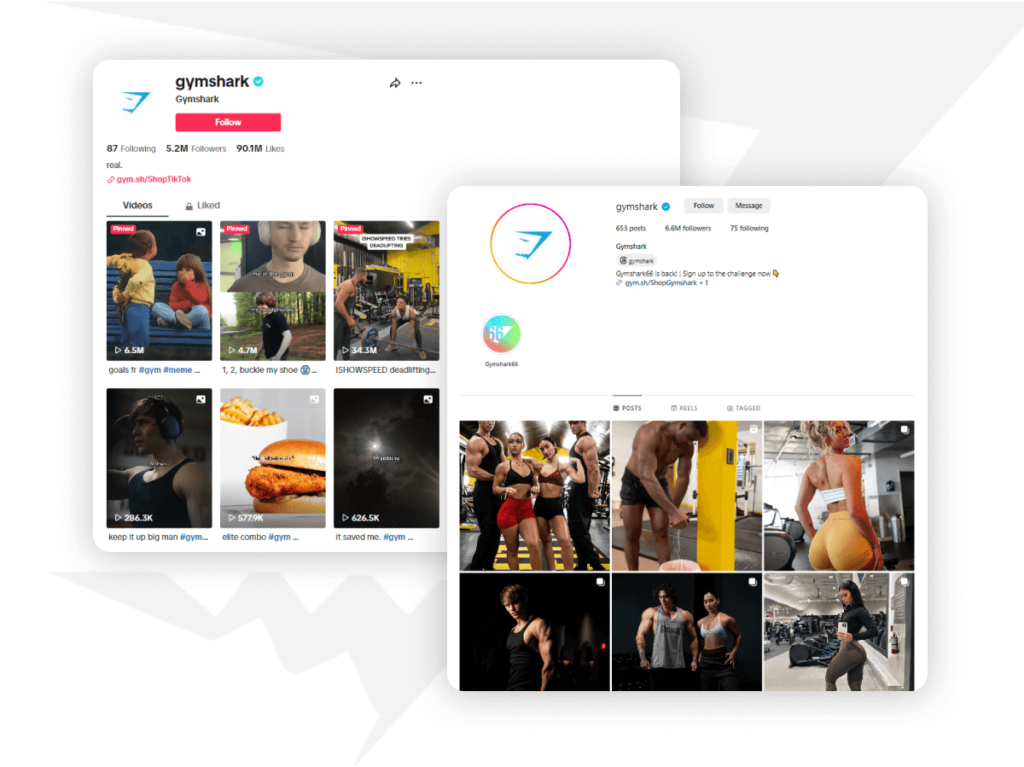
Structured Data Earns Google Preview Boxes – Example 8 (Allrecipes)
Optimising your site with structured data is made simple when seeking inspiration from Allrecipes, a premier recipe website.
Why it made the best list: Allrecipes uses structured data to mark key information, helping search engine web crawlers understand it. By doing so, search engines display this information in an accessible way through Google Preview Boxes, attracting visitors who are looking for specific food recipes.
Top 5 Features:
- Recipes marked with schema to highlight key elements.
- Uses Schema Markup Validator to check website data structure.
- Intuitive site layout and navigation.
- User-friendly, aesthetic recipe presentation.
- Clear and concise recipes make it easy for Google to pull data.
Five benefits:
- Google Preview Boxes increase visibility and click-through rates.
- Detailed use of schema helps search engines understand site content better.
- User friendly recipe presentations improve user experience.
- Improved organic site traffic.
- Achieved competitive edge in SERP against other recipe sites.
Two cons:
- Time-consuming process to correctly implement structured data.
- Risk of penalties from Google for incorrect use of structured data.
Who it works best for: Businesses like Allrecipes that operate in various service-oriented niches can learn from their approach. Using structured data to highlight key aspects of your service can significantly increase visibility in SERPs and attract more visitors.
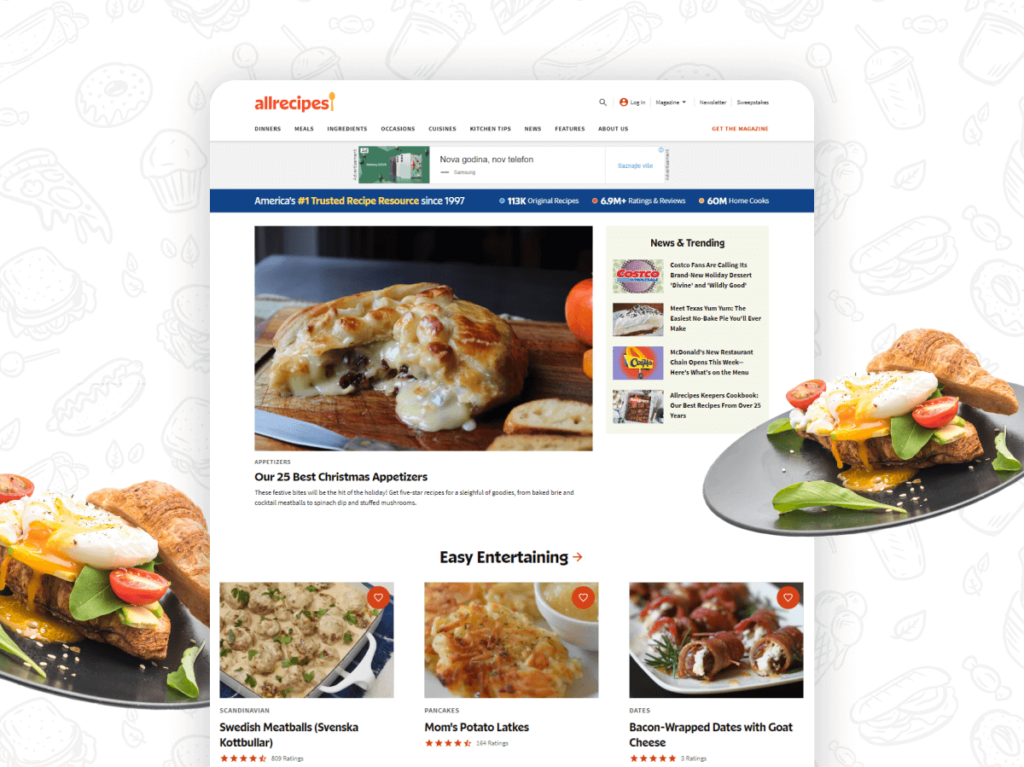
Frequent Blogging Schedule – Example 9 (Beauty Bay)
Beauty Bay, a beauty and skincare e-commerce company, sets a prime example when it comes to adhering to a frequent blogging schedule.
Why it made the best list: Beauty Bay dedicatedly maintains a frequent blog posting schedule. They update their blog section with fresh, keyword-rich, and high-quality content about beauty trends, product reviews, and beauty tips regularly. This consistent content publishing helps to drive substantial organic traffic to their site.
Top 5 Features:
- Diverse, quality content covering beauty trends, product reviews, and tutorials.
- High use of relevant, long-tail keywords in the blog content.
- Frequent updates to engage readers better.
- Reader-friendly layout and good use of images.
- Interlinking of blog posts to provide comprehensive information.
Five benefits:
- Fuels SEO, drawing massive organic traffic.
- Establishes Beauty Bay as a thought-leader in the beauty industry.
- Diverse content caters to a wider audience demographic.
- Regular blog posting keeps users engaged and interested.
- Helps the brand to connect with their audience on a personal level.
Two cons:
- Maintaining a regular posting schedule requires dedicated resources.
- Overuse of keywords or lack of optimal keyword strategy may impact authenticity and SEO efforts.
Who it works best for: This approach works wonders for businesses looking to build authority and stay top-of-mind with their customers. Regularly updated, quality content can help in ranking better in search engine results, thereby attracting more organic traffic.

Technical Optimisation for Better Speed – Example 10 (The INKEY List)
The INKEY List, a player in the beauty and cosmetics industry, offers a leading example of technical optimisation for better page load speed.
Why it made the best list: The INKEY List ensures that their site is technically optimised for speed, improving user experience and SEO ranking. Fast loading times result in lower bounce rates, more engagement, and better conversion rates.
Top 5 Features:
- Compressed images to reduce load time.
- Minimalistic website design.
- Removal of unnecessary plugins and scripts.
- Use of browser caching and Content Delivery Network (CDN).
- Regular updates to ensure optimal performance.
Five benefits:
- Improved site speed, enhancing user experience.
- Lower bounce rates due to faster loading pages.
- More engagement as users can navigate the site seamlessly.
- Better conversion rates as a result of improved user experience.
- Potential for higher ranking in search engines due to improved speed.
Two cons:
- Regular monitoring is necessary to ensure optimal site speed.
- Major changes to the website for better speed optimisation could lead to unexpected errors or issues.
Who it works best for: This approach to SEO works best for e-commerce businesses or any business with large websites. Ensuring that the site loads quickly is crucial for maintaining user attention and improving search engine ranking.

Monthly Content Plan – Example 11 (Luna Sandals)
Luna Sandals, a provider of outdoor sandals, showcases the effectiveness of a monthly content plan for maintaining an active blog and engaging their community.
Why it made the best list: Luna Sandals has a systematised content schedule that they follow diligently. By planning formal content pieces and supplementing them with user-engagement posts, they ensure fresh and diverse content each month.
Top 5 Features:
- Detailed blog posts about product features and usage.
- Engaging user content like testimonials and narratives.
- Timely updates on events and company news.
- Content themes revolving around outdoor activities and healthy lifestyle.
- Tactical incorporation of keywords in blog posts.
Five benefits:
- Regular updates keep the audience engaged and coming back.
- Diverse content caters to different reader interests.
- Leads to increased time spent on the website.
- Fresh content improves SEO efforts and visibility.
- Strengthen the brand’s relationship with its community.
Two cons:
- Requires allocation of time and resources for planning and execution.
- Inconsistent quality or relevance of content might be a result of frequency pressures.
Who it works best for: Luna Sandals’ approach to content planning serves as a blueprint for businesses aiming to keep their website dynamic, particularly those that thrive on community engagement and have a story-driven approach to marketing.

Optimising Page Speed for Better UX – Example 12 (Rei)
Rei, the well-known outdoor gear brand, is a great example of a company that optimises page speed for an enhanced user experience (UX).
Why it made the best list: Rei prioritises a fast-loading website to improve UX and SEO. As a key factor for ranking by search engine algorithms, Rei ensures their website load time is a mere 1.07 seconds, setting an industry benchmark.
Top 5 Features:
- High-resolution images that have been optimised for speed.
- Use of browser caching to improve load times.
- Code minification to speed up site performance.
- Compression of media files to keep high-quality visuals without slowing the site.
- Optimised server response time.
Five benefits:
- Enhances the user experience by reducing wait times.
- Increases user engagement and lowers bounce rates.
- Encourages customer loyalty by improving overall site usability.
- Boosts organic search rankings due to improved UX signals.
- Increases the chance for conversions by keeping customers on-site longer.
Two cons:
- Requires regular monitoring to ensure optimal load times.
- Depending on site design, optimising for speed can be technically challenging.
Who it works best for: Rei’s method is best for ecommerce and media-heavy websites that struggle with long load times. Optimising for speed will improve not just UX and search rankings, but also conversion rates by making the shopping experience effortless and swift.

High-Quality Backlink Building – Example 13 (Venngage)
Venngage, an online visual design platform, exemplifies the utility of effective backlink building in SEO strategy.
Why it made the best list: Venngage strategically focused on earning high-quality backlinks to boost their website’s domain authority. By doing so, they’ve successfully increased their brand visibility and have attracted a significant volume of organic traffic.
Top 5 Features:
- Relevant content creation matched to their target audience needs.
- Proactive search for partnership opportunities.
- Building relationships with industry influencers and bloggers.
- Regular blog posts containing valuable information, encouraging natural backlinking.
- Wisely balances between high-volume, low-intent searches and low-volume, high-intent searches.
Five benefits:
- Higher position in search engine rankings.
- Enhanced brand visibility and credibility in the industry.
- Increased traffic to their website.
- Generation of promising leads.
- Creation of beneficial partnership opportunities.
Two cons:
- Quality backlink generation is a time-consuming process.
- Risk of receiving ineffective or bad links if not monitored regularly.
Who it works best for: The backlink building approach used by Venngage can be ideal for businesses aiming to enhance their brand’s online reputation and visibility. It’s particularly beneficial for businesses in competitive industries, where establishing credibility takes precedence.
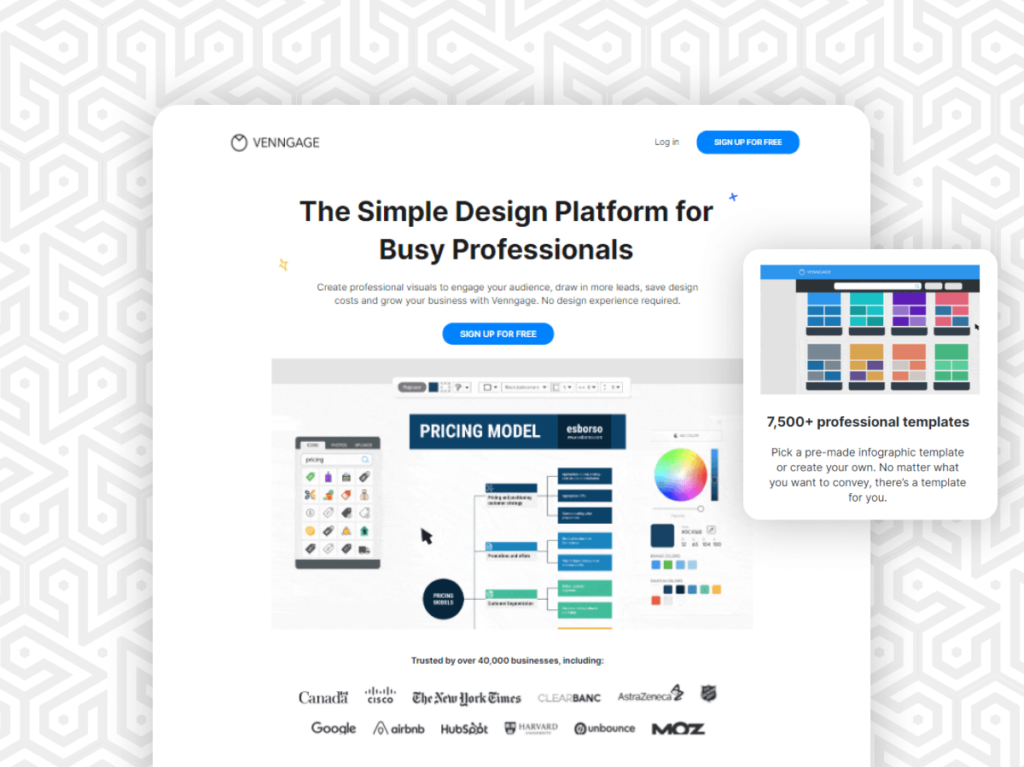
Creating SEO Optimised Content – Example 14 (Pepsi)
Pepsi, the popular carbonated soft drink company, exhibits how to create SEO optimised content that resonates with the target audience and appeals to the search algorithms effectively.
Why it made the best list: Pepsi tactfully utilises H1 and H3 tags to associate its brand with enjoyable moments like consuming their beverage. They incorporate strategic keyword use and catchy phrases that appeal to a broad range of search intents, demonstrating a top-notch SEO optimisation in their content.
Top 5 Features:
- Sparing yet strategic use of keywords in titles and headers.
- Reinforces brand messaging using appealing phrases.
- Inclusion of keywords that are highly relevant to their industry and product.
- Utilises rich media content like images and videos.
- Masterfully interlinks webpages for an enhanced user journey.
Five benefits:
- Engages and attract potential customers.
- Improved visibility in search engine results.
- Increased organic traffic to the site.
- Reinforces the brand image and identity.
- SEO optimisations lead to a better user journey across the website.
Two cons:
- Regularly updating content as per evolving SEO strategies can be resource-heavy.
- Over optimisation can be deemed suspicious by search engines.
Who it works best for: Pepsi’s SEO approach is highly applicable to businesses aiming to reinforce their brand image while appealing to a broader target audience. The method is also suitable for companies aiming to optimise their website in alignment with their branding messages.
Conclusion
The future of SEO Strategies
As we move further into the digital age, SEO strategies continue to evolve in ways that prioritise user experience while seamlessly aligning with search engine requirements. Here are the fundamental trends and shifts that will shape the future of SEO.
- Voice Search Optimisation: With the burgeoning use of voice assistants like Alexa, Siri, and Google Assistant, optimising for voice search becomes indispensable. Brands will need to adopt a more conversational tone in their content and focus on longer, more natural-sounding phrases.
- Artificial Intelligence in SEO: Artificial Intelligence (AI) will play a more prominent role in SEO strategies. AI’s ability to analyse user behaviours and patterns with machine learning opens up opportunities for more precise personalisation and suggestion systems.
- Mobile SEO: As more users access the internet through their mobile devices, mobile optimisation continues to be a critical SEO factor. Brands will need to ensure their websites are mobile-friendly and offer a seamless user experience across devices.
- Content Quality Over Quantity: The emphasis on high-quality, relevant content will continue to grow as search engine algorithms become more sophisticated. Brands will need to focus on producing content that is genuinely valuable to their audience.
- Rich and Featured Snippets: Rich and featured snippets will continue to dominate SERPs. Brands will need to optimise their content to earn these coveted “position zero” spots.
- E-A-T (Expertise, Authoritativeness, Trustworthiness) & YMYL (Your Money Your Life) practices: Google’s emphasis on E-A-T and YMYL will necessitate websites to produce reliable and high-quality content, particularly for sites dealing with critical life aspects like health, finance, safety, and news.
The pace of change in SEO shows no sign of slowing down. Yet, one thing remains constant – satisfying user needs is at the centre of all SEO efforts. Being adaptable and keeping users as their primary focus will help brands thrive in this ever-changing landscape.
Wrap-up on SEO examples and how they can inspire your strategy
Noted as a dynamic and rapidly changing field, SEO requires a firm understanding of how search engines function, and equally importantly, how users behave. We’ve explored numerous SEO examples from brands like Etsy, Nike, Amazon, Macy’s, Looka, and more, each offering unique insights into the various components of a successful SEO strategy.
This broad range of examples highlights the many facets of SEO, from creating an effective keyword strategy and optimising for local SEO, to regularly updating content and building quality backlinks. These examples also demonstrate the importance of staying on top of SEO trends and continuously adjusting your strategy to meet evolving search engine algorithms and user behaviours.
Remember, while these examples serve as great inspiration, SEO isn’t a one-size-fits-all solution. The key lies in understanding your brand’s unique needs, your target audience, and how you can align your SEO practices with these elements. It’s crucial to adopt an SEO strategy that squares with your business goals, reinforces your brand identity, and enhances your digital presence in a way that appeals most to your audience.
By merging the tactics used by these brands with your own unique approach, you can create an SEO strategy that not only drives traffic but also encourages conversions, fosters customer loyalty, and enhances your overall online presence.
Experiment with various techniques, learn from the examples provided, measure your results, and most importantly, stay flexible in your approach. Happy optimising!
FAQ section
How does SEO work?
When you type a query into a search engine, it works in real-time to scour its vast database of indexed webpages to seek out the most relevant and authoritative results for your query. This process, powered by algorithms, underscores how SEO works.
The search engine considers several factors known as ranking signals to determine the relevance and authority of a page, including but not limited to:
- Content Quality: The quality of your content is paramount. It should be well-written, demonstrate expertise in your field, and should match the search intent of the user.
- Keyword Usage: Your use of keywords – the terms users type into search engines – can impact your visibility. It’s important to use keywords strategically in your page titles, meta descriptions, headers, and content.
- User Experience: Search engines factor in the user-friendliness of your website. They consider page load times, mobile-friendliness, and easy site navigation.
- Backlinks: When other websites link back to your page, it tells search engines that your content is valuable, authoritative, and trustworthy.
- Site Security: Search engines favour websites with HTTPS encryption, considering them more secure.
- Structured data: Applying structured data to your pages can help search engines to better understand your content, and could potentially lead to the granting of rich results in the search engine results pages (SERPs).
While we don’t completely understand these search algorithms (they’re closely guarded secrets), SEO professionals have used experimentation and observation to develop a broad understanding of the factors that can improve rankings. By optimising these factors on your pages, you can improve your website’s visibility in search results and attract more organic (unpaid) traffic.
It’s crucial to note that SEO is part art, part science. There’s no one-size-fits-all SEO formula – each website requires a unique approach to ranking.
Can I Do SEO Myself?
Yes, you certainly can undertake SEO yourself. The trick lies in learning the basics, staying updated with the latest trends, and implementing learned strategies on your website. Here’s how you can get started:
- Educate Yourself: Familiarise yourself with SEO basics by taking online courses, reading blogs, and learning from reputable sources. Websites like Moz, SEO Journal, and Google’s own SEO guidelines are excellent places to start.
- Keyword Research: Learn how to effectively conduct keyword research using tools like Google Keyword Planner or Semrush. This helps you identify the keywords that your potential customers use.
- Competitor Analysis: Look at what your competitors are doing. Study their content and observe their SEO practices.
- On-Page SEO: Learn how to optimise the content and HTML tags on your webpages. Place your selected keywords in the right spots, like the title tag, header tags, alt text, and body content.
- Link Building: Understand the importance of having high-quality backlinks and how to acquire them.
- Technical SEO: Familiarise yourself with sitemap optimisation, URL structure, mobile optimisation, and website speed, and learn how to fix any issues.
- Content Creation: Create valuable, high-quality, and engaging content for your audience. Content is king when it comes to SEO.
- Monitor and Adjust: Use Google Analytics and Google Search Console to monitor the performance of your site and make necessary adjustments.
Remember, SEO is not a one-time task but a continuous process. The search landscape keeps changing, and you need to keep adapting. If you feel unable to handle it yourself or want to focus more on your primary work, it might be better to engage an SEO professional or agency. But if you’re willing to spend the time and effort to learn and implement, DIY SEO can be a worthwhile endeavour.
Sources
[1] BrightEdge: https://www.brightedge.com/blog/organic-share-of-traffic-increases-to-53
[2] Fat Joe: https://fatjoe.com/blog/history-of-seo/
[3] HubSpot: https://blog.hubspot.com/blog/tabid/6307/bid/14416/100-Awesome-Marketing-Stats-Charts-Graphs-Data.aspx
Disclaimer
Some of the links in this post are affiliate links. This means if you click on the link and purchase the service, we may receive an affiliate commission at no extra cost to you. Rest assured, we only recommend products we believe will add value to our readers.
Submit An App
Seen a cool app you think we should review? Submit your recommendation using our form.

